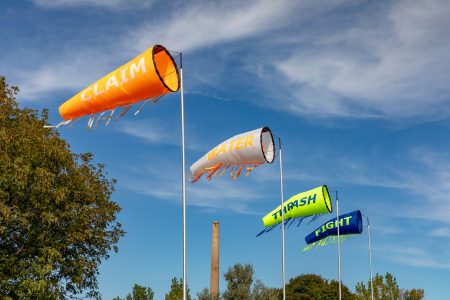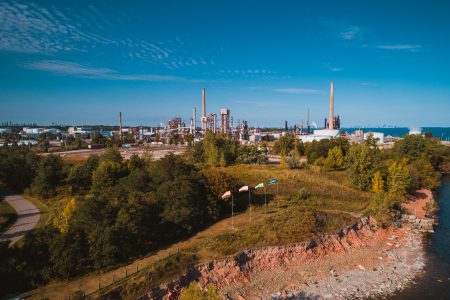This work is an elaboration of concepts that artist Tania Willard has been working with in BUSH Gallery: a collaborative project that centres Indigenous lands and leadership. Willard connects her Secwépemc positionality and territory within Mississauga territory through the story of Chinook Salmon—introduced into Lake Ontario in the 1960s for sport fishing and to prey on other invasive species of fish also introduced by settler water management strategies. Chinook were preferred for sport fishing because they “fight” and “thrash” on the line. Dramatic species decline and extinction in the Great Lakes from settler management is felt strongly by Indigenous peoples whose ways of life and sacred responsibilities in harvesting resources have been changed irrevocably. Current water claims by the Mississaugas of the New Credit assert rights to waterways and aquatic resources that were not surrendered in treaty. This project conceptualizes points of overlap in an exercise of building relations that also acknowledges the artist’s position as an uninvited guest implicated in the settler project (albeit through the gallery) in an interlacing of coloniality.
Asserting Indigenous presence and claims to the water, Liberation of the Chinook Wind also conceptualizes points of overlap between Indigenous nations, settlers and uninvited guests, and the non-human by exploring the entangled histories of Chinook language, Chinook Wind, and Chinook Salmon.
Chinook jargon was an early trade language—a hybrid of Indigenous and settler languages in the Pacific Northwest. Members of Willard’s family spoke and wrote Chinook in the past, a fact that counters myths of isolation in pre-contact Indigenous interactions. The Chinook Wind is also an animate being in Secwépemc creation story—In a time of discussions of the Anthropocene, Indigenous concepts of interrelatedness are essential to counteracting our human-centric worlds. In this project, the agency of the wind is suggested through a data visualization in which ambient weather data (collected by four windsocks overlooking the water) is used to generate poetry.
The wind poetry was realized in association with Steve Szigeti (ICCIT, UTM) and programmed by Stephen Keller.

Liberation of the Chinook Wind
Artist
Medium
Year
City
State / Province
Country






